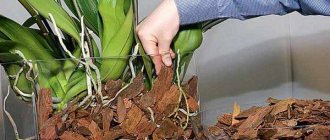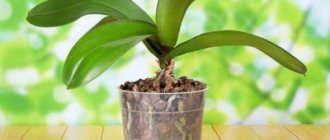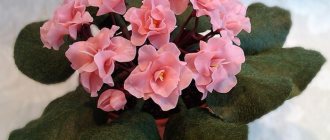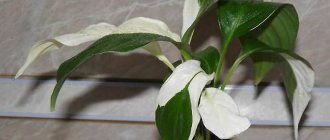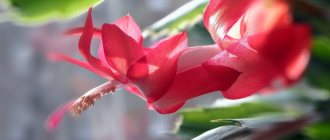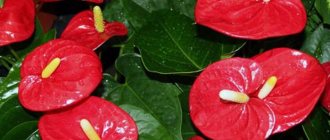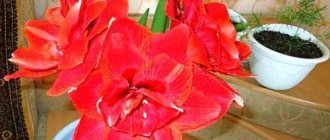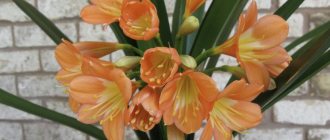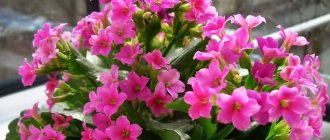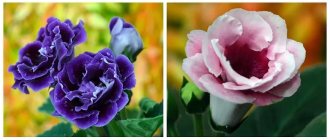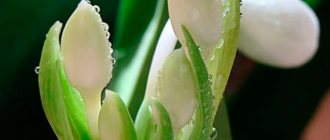How to care for geraniums
Indoor geranium is considered an unpretentious flower, but for abundant flowering of geranium, you should follow the rules. Be sure to pay attention to the following points:
- Proper watering. Frequent watering of geraniums is not required; it is better to water rarely, but pour a lot of water. Optimally - twice a week. If you overdo it, mold will appear.
- Feeding. Geraniums need to be fed during the flowering period, as well as from spring to summer. Feeding with iodine is carried out. To do this, one drop of iodine must be diluted in a liter of water. Loves geranium and extracts with phosphorus. They are added during watering. And the application of nitrogen fertilizers is reduced to a minimum; it is better to apply mineral or organic mixtures.
- Loosening the soil. The earth is loosened several times a month, this helps prevent rotting of the roots, oxygen reaching the roots, and preventing the appearance of parasites.
- Transfer. It is done once every two years. Replanting is necessary because the roots grow and become crowded. Geraniums are transplanted into a larger container.
- Spring pruning. The flower wakes up from hibernation and needs to be pruned. If you prune in the spring, this will have a beneficial effect on flowering. During pruning, remove all yellow and damaged leaves and remove new shoots. Leave shoots with no more than five buds.
If you follow all the rules, geranium will delight you with lush flowering throughout the summer.
Features of feeding geraniums
- When feeding, it is important to follow the dosage. If you add too many nutrients, the leaves will turn yellow and wilt.
- Nitrogen fertilizers for geraniums help it recover. They are added after pruning.
- Feeding geraniums for abundant flowering does not require special expenses. The main thing is to water the geranium with iodine dissolved in water, add a complex of minerals, observing the dosage.
You may be interested in: How to feed a money tree at home
Fertilizers for lush flowering
For abundant flowering, pelargonium needs to be fed with mineral fertilizers. One-component fertilizers required:
- Nitrogen;
- Potassium:
- Phosphorus;
- Iodine.
Nitrogen promotes the growth of the vegetative part of the plant - stem, leaves, roots. It is used in the first months of spring. Phosphorus is required for the formation of buds. Its lack slows down the process. Potassium increases endurance. With its deficiency, growth stops.
When the buds open, reduce the amount of nitrogen and increase the amount of potassium. You can also use complex fertilizers, which contain many minerals. Benefits for geranium:
- Iron;
- Sulfur;
- Manganese;
- Boron;
- Magnesium;
- Honey;
- Zinc;
- Calcium.
These minerals are an additional source of strength for its good growth. Thanks to sulfur and magnesium, it will bloom regularly. All substances should be applied in accordance with the attached instructions. Iodine is one of the most necessary elements for pelargonium. It is necessary for lush flowering.
When transplanting and propagating, you can use drugs to stimulate growth - heteroauxin, glucose solution
Tips for gardeners
Fertilizers in liquid form can only be used after watering, as there is a risk of burning the roots of the plant.
- After adding minerals, the soil under the flower needs to be loosened.
- Pelargonium cannot be fed 2 weeks before transplantation and 1 week after.
- The flower has buds - it cannot be disturbed or moved to another place. This will be stressful for her.
- Sick pelargoniums cannot be fertilized.
There are many ways to feed geraniums at home. The two most famous:
- with the addition of iodine, peroxide;
- using pharmaceutical vitamins.
Types of feeding geraniums
Spring feeding. As soon as pelargonium begins to wake up after a long winter, it needs to be fed. Fertilize geraniums with special mineral mixtures once every two weeks. Mineral mixtures can be purchased at the store. Also in the spring, organic fertilizers are applied, and a solution of iodine is used to feed geraniums.
Summer feeding. The geranium is blooming, during this period it needs to be fed for flowering. Fertilizing is carried out in the same way as in spring. The same fertilizers are used. Autumn feeding. Most varieties of geranium go dormant in the fall and winter; fertilizing is carried out until September. The frequency of fertilizing is reduced. Fertilizers are applied once a month.
Winter feeding. Geranium does not need feeding in winter. She is at rest at this time. Half the dose of nutrients should be applied in mid-winter.
Consequences of improper fertilization
It is worth understanding that an excess of fertilizers is just as harmful to the plant as their lack. Therefore, fertilizing should be applied no more often than once every three weeks.
If fertilizers are used incorrectly, the roots can be damaged and the geranium will begin to hurt or die.
Whatever fertilizer you use for geraniums, you must keep in mind: a lack of useful elements is just as detrimental to the plant, as is their excess . Only by observing specific dosages when applying fertilizers can you achieve the result - increase, formation, abundant flowering and good survival rate of geraniums.
How to feed geranium at home
It is not necessary to purchase expensive mineral fertilizers in the store. You can fertilize geranium at home with what everyone has in their home.
Hydrogen peroxide
It is necessary to make a solution: dilute 25 g of hydrogen peroxide in a liter of water. The plant is sprayed with this solution. This method is used when the plant is completely weakened. Treatment helps get rid of diseases.
Yeast for feeding
Yeast is used to strengthen the general health of the plant and accelerate growth. Once in the soil, the fungus stimulates the production of nitrogen and potassium. To prepare the fertilizer, add 1 gram of dry yeast to a liter of water. Water the plant with this solution. You can add sugar, this will only improve the effect.
You may be interested in: Treatment of grapes in the fall from diseases and pests, feeding grapes
Milk
Water the geranium with a milk solution (100 ml of milk per 1 liter of water), alternating with regular watering.
Glucose
Glucose solution is used for feeding during rooting of sprouts. But not all varieties of geranium love glucose; royal geranium does not require such feeding. If the geranium leaves have wilted, stop feeding. The supplement is prepared from a liter of water and a glucose tablet. Water the geranium with the solution.
Castor oil
Castor oil is necessary to stimulate the growth of any plant. Take a teaspoon of castor oil per liter of water. The mixture is carefully sprayed onto the leaves of the flower. You can pour the solution under the root. Oil should be applied during the flowering period or at the stage of bud formation.
The benefits and harms of yeast supplements
Yeast is a fungal single-celled structure. The breeding ground for fungal colonies is places containing an abundance of organic compounds. The soil in which indoor geraniums and other flowers are grown is a medium containing just such compounds. It contains waste products of insects and plant residues.
Yeast contains a lot of protein, mineral salts, amino acids, including essential ones. Thanks to this composition, yeast can be used as a fertilizer for various plants.
The beneficial effects of yeast feeding are as follows:
- growth is activated;
- the root system is strengthened;
- the above-ground part of the plant develops;
- the flowering period is extended;
- plants develop well even with short daylight hours and lack of lighting;
- the activity of bacteria that saturate the soil with nitrogen is activated;
- the chemical composition of the soil improves.
Yeast-based fertilizers are not a complete fertilizer. Such agents act as growth stimulants. Therefore, it is useful to use them to supply indoor geraniums with useful substances and to successfully root cuttings during propagation.
Important! Inept use of yeast-based fertilizers can harm the plant. For its development, yeast takes potassium and calcium from the soil, which plants need. Therefore, there is no need to overuse fertilizers based on them, but to compensate for the deficiency of useful elements, periodically add wood ash to the soil.
How to feed geraniums for abundant flowering
Nutrition with iodine and manure
It is prohibited to introduce fresh manure. Feeding with this organic fertilizer can immediately destroy the plant. If pelargonium grows on a balcony or loggia, as well as in open ground in summer, you can add organic matter, but not fresh, and not more than once every 20 days. After such feeding, the flowers and leaves become strong and bright, the stem becomes stronger.
Regular watering is replaced by watering with an iodine-water solution. This will help the geranium begin to actively bloom and grow. Water can be replaced with rainwater, there are more nutrients there.
Nutrition with vitamins and nitrogen
How are fertilizers applied? Application rules must be followed:
- In early spring, before flowering, nitrogen fertilizers are applied. They must be paid once every 14 days. They improve leaf growth and bud formation.
- Vitamins are diluted in water. They can be purchased at the pharmacy. This will be cheaper than purchasing special fertilizer. The vitamin complex is changed every two weeks.
- Magnesium sulfate affects wild flowering. For nutrition, crystals of this chemical are dissolved in water, and the solution is used for irrigation.
- Increasing the amount of calcium in the soil is necessary if pelargonium grows and blooms poorly.
- The enrichment sequence is mandatory. Feeding is carried out during the flowering period and at the stage of bud formation.
Features of geranium care
- Despite the fact that geranium is an unpretentious plant, you need to observe some nuances:
- The soil for geraniums must be fertile. Only then will pelargonium produce a maximum of flowers and a minimum of greenery. When transplanting, you need good drainage.
- There is no need to spray the flower. But it is important to provide the plant with fresh air. In summer, it is better to move the plant to the balcony, or you can plant it in a flower bed.
- Geraniums should grow in a well-lit place. She is not afraid of direct rays of the sun. Only on particularly hot days is the flower removed from direct contact.
- There are no special requirements for temperature. In winter, the optimal temperature is 15 degrees.
- The plant does not tolerate fresh organic matter.
- Iodine is ideal for plants as a fertilizer, but you should not apply more than 50 ml of it.
You may be interested in: Osmocote - long-acting fertilizer
Feeding geraniums with yellow leaves
Pelargonium leaves often turn yellow; this can happen for various reasons:
- A transplant is required. The problem will disappear on its own after transplanting the plant into a large pot.
- Incorrect care. Pelargonium leaves may turn yellow due to drafts, too much moisture or too much temperature in the autumn-winter period.
- Lack of drainage. The leaves may turn yellow or even lose their color.
- Due to the large amount of nitrogen fertilizers, yellowness may appear on the leaves. Feeding with potassium-phosphorus agents is necessary.
Watering rules
The watering regime for geraniums directly depends on the time of year . In summer, when the air temperature is high, the plant needs to be watered frequently and abundantly. It is worth constantly monitoring the earthen lump in the pot, it should not dry out completely.
But at the same time, you should not overwater the plant; if the moisture stagnates, this will lead to rotting of the roots and it may die. Watering is carried out from 1 to 3 times a week - this is optimal for geraniums.
Monitor the plant carefully; if gray spots or mold appear on the leaves, or the stem begins to turn black, this indicates overwatering or stagnation of moisture at the bottom of the pot. Experts advise draining the water from the pan after watering so that the earthen ball does not turn sour.
But the lack of moisture also adversely affects the health of geraniums - the leaves become pale, drooping, and flowering is poor. You can tell by the earthen lump when the geranium needs watering, since in the summer it can dry out every day or every other day.
As for the winter period, at this time geranium, like other plants, enters a dormant period, so watering is reduced to a minimum - once every 10 days.
If indoor geranium is constantly waterlogged in winter, the plant may die from root rot.
Our specialists have prepared materials for you on how to properly transplant and plant geraniums, select a pot and soil, and also prune.
How to feed geraniums when transplanting
Geranium does not like transplanting. Therefore, this should only be done when the flower has grown out of the pot. It is necessary to make a drainage layer in the new pot and choose the right soil. The soil must be loose and fertile. In the store you can buy soil intended for flowering plants.
The composition of the soil may include:
- Soil with peat and perlite additives.
- Layer of soil from the garden (top).
- Humus with sand.
No additional nutrition is required during transplantation. Feeding is carried out a couple of months after transplantation.
fertilizing, flowers

